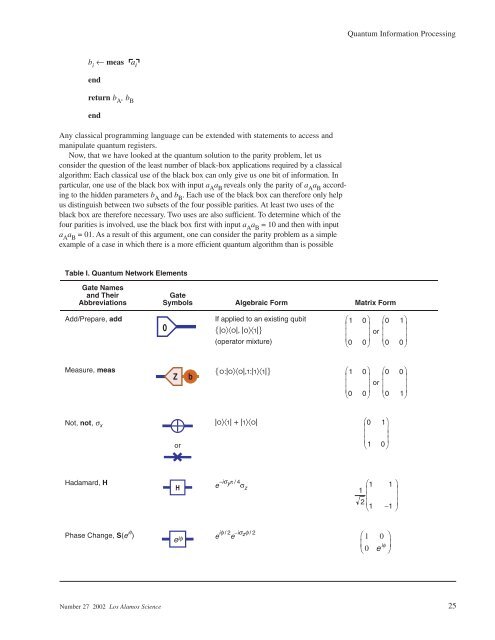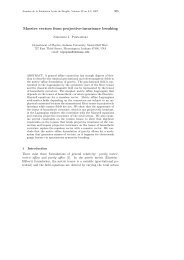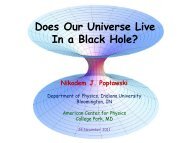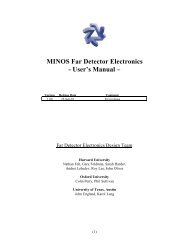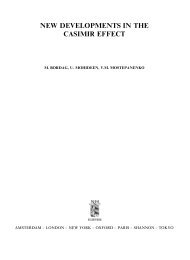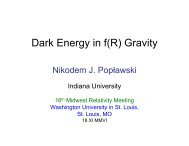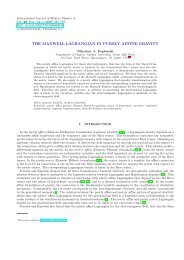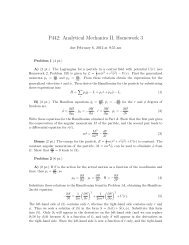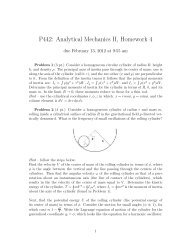Quantum Information Processing
Quantum Information Processing
Quantum Information Processing
Create successful ePaper yourself
Turn your PDF publications into a flip-book with our unique Google optimized e-Paper software.
i ← meas<br />
end<br />
return b A ,b B<br />
end<br />
Any classical programming language can be extended with statements to access and<br />
manipulate quantum registers.<br />
Now, that we have looked at the quantum solution to the parity problem, let us<br />
consider the question of the least number of black-box applications required by a classical<br />
algorithm: Each classical use of the black box can only give us one bit of information. In<br />
particular, one use of the black box with input a A a B reveals only the parity of a A a B according<br />
to the hidden parameters b A and b B . Each use of the black box can therefore only help<br />
us distinguish between two subsets of the four possible parities. At least two uses of the<br />
black box are therefore necessary. Two uses are also sufficient. To determine which of the<br />
four parities is involved, use the black box first with input a A a B = 10 and then with input<br />
a A a B = 01. As a result of this argument, one can consider the parity problem as a simple<br />
example of a case in which there is a more efficient quantum algorithm than is possible<br />
Table I. <strong>Quantum</strong> Network Elements<br />
Gate Names<br />
and Their<br />
Abbreviations<br />
Add/Prepare, add<br />
Measure, meas<br />
Not, not, σ x<br />
Hadamard, H<br />
a i<br />
Phase Change, S(e iφ )<br />
Gate<br />
Symbols Algebraic Form Matrix Form<br />
0<br />
Z b<br />
or<br />
H<br />
e i<br />
If applied to an existing qubit<br />
{|〉〈|, |〉〈|}<br />
(operator mixture)<br />
<strong>Quantum</strong> <strong>Information</strong> <strong>Processing</strong><br />
⎛1<br />
0⎞<br />
⎛0<br />
1⎞<br />
⎜ ⎟ ⎜ ⎟<br />
⎜ ⎟ or ⎜ ⎟<br />
⎜<br />
⎝0<br />
0<br />
⎟ ⎜<br />
⎠ ⎝0<br />
0<br />
⎟<br />
⎠<br />
{:|〉〈|,:|〉〈|} ⎛1<br />
0⎞<br />
⎛0<br />
0⎞<br />
⎜ ⎟ ⎜ ⎟<br />
⎜ ⎟ or ⎜ ⎟<br />
⎜ ⎟ ⎜ ⎟<br />
⎝0<br />
0⎠<br />
⎝0<br />
1⎠<br />
|〉〈| + |〉〈| ⎛0<br />
1⎞<br />
⎜ ⎟<br />
⎜ ⎟<br />
⎜ ⎟<br />
⎝1<br />
0⎠<br />
e –iσ y π / 4 σz<br />
e iφ / 2 e –iσ zφ / 2<br />
⎛1<br />
1⎞<br />
1 ⎜ ⎟<br />
⎜ ⎟<br />
2 ⎜ ⎟<br />
⎝1<br />
−1⎠<br />
1 0<br />
0 e iφ<br />
⎛ ⎞<br />
⎜ ⎟<br />
⎝ ⎠<br />
Number 27 2002 Los Alamos Science 25


